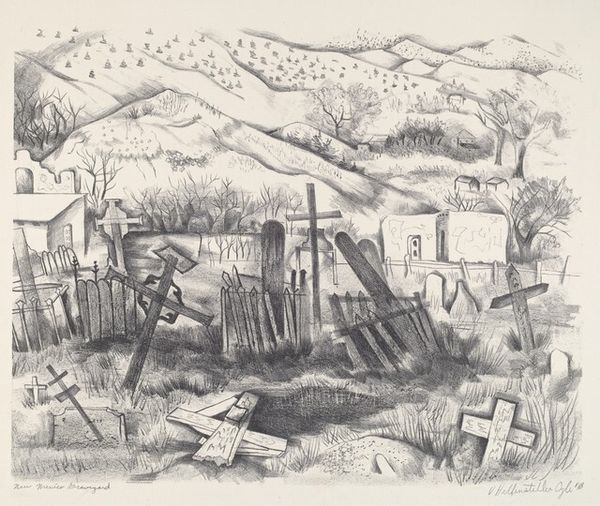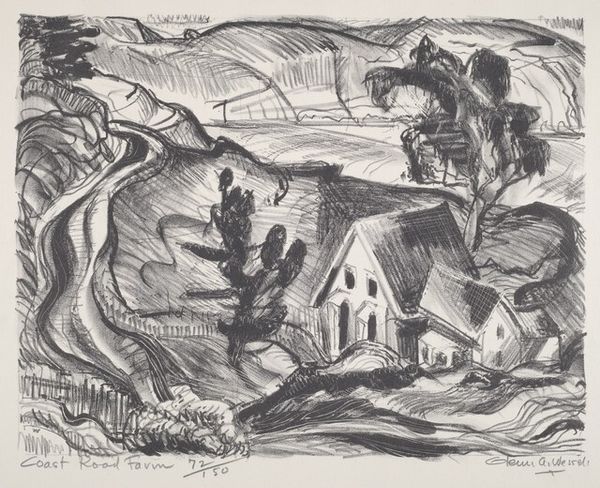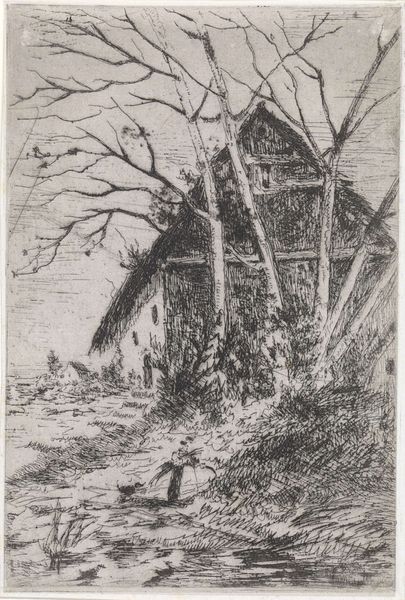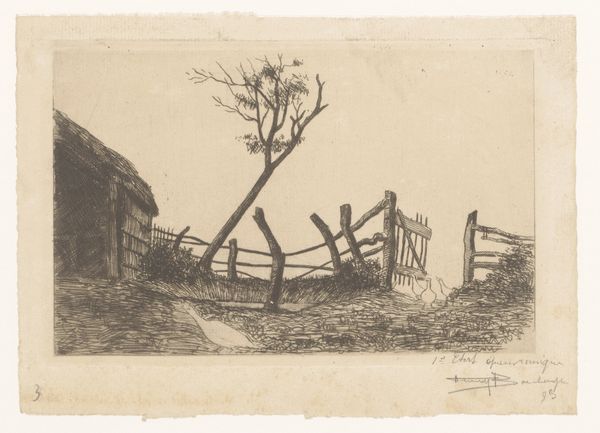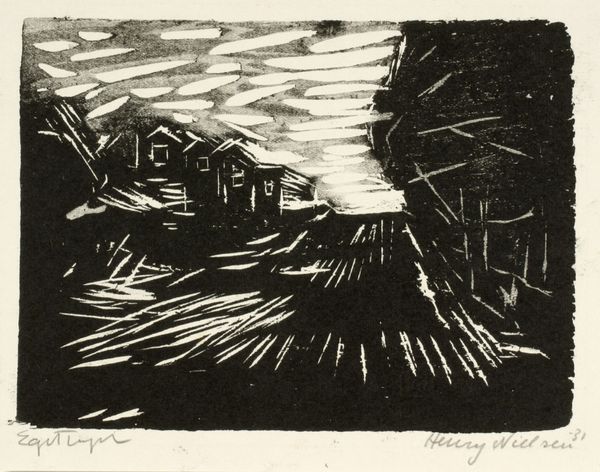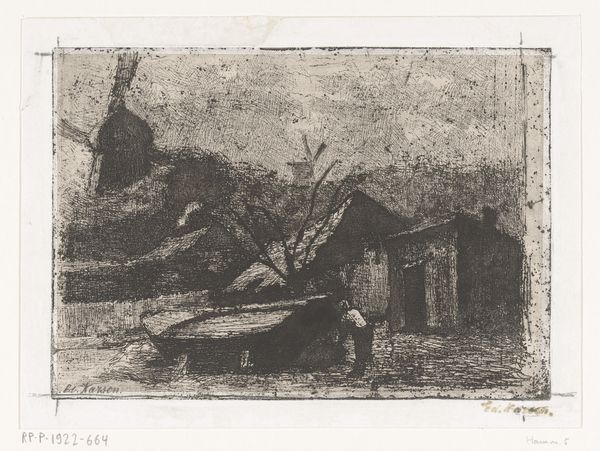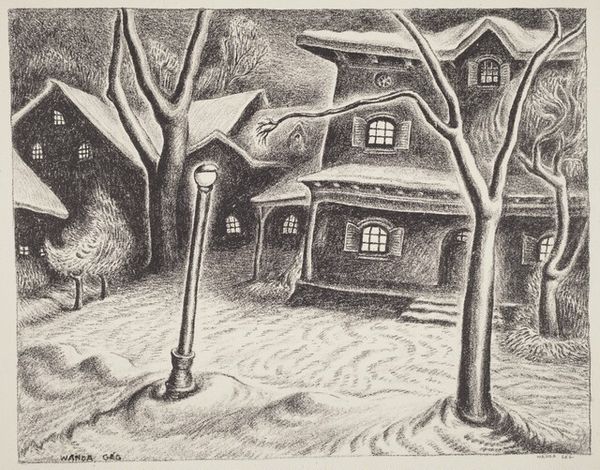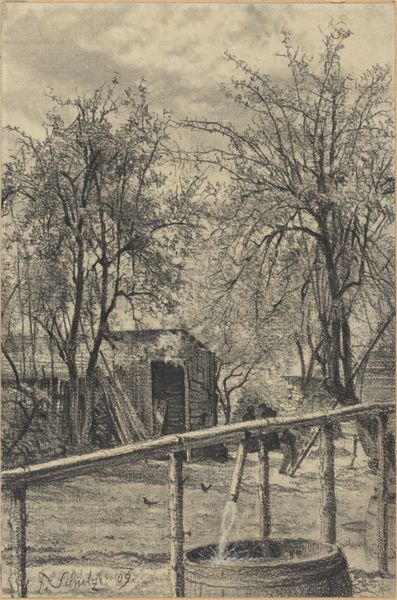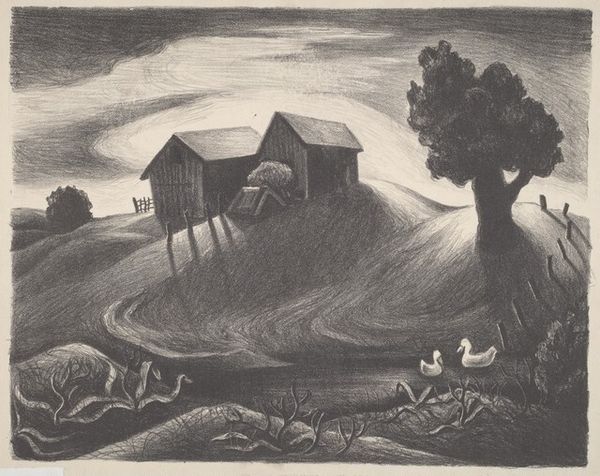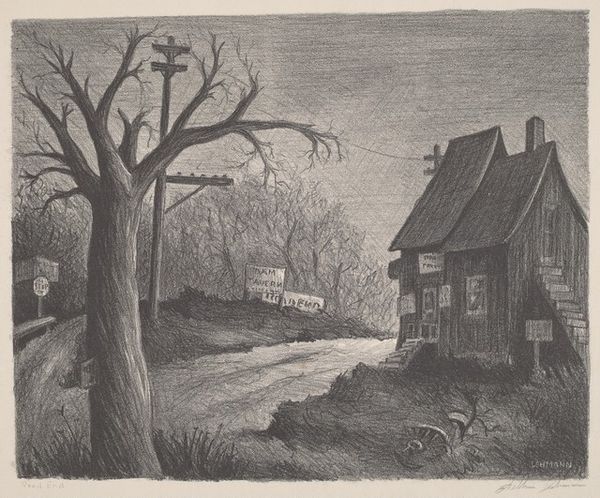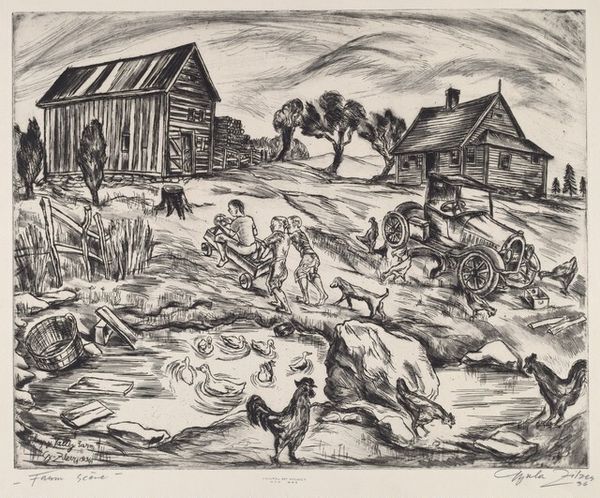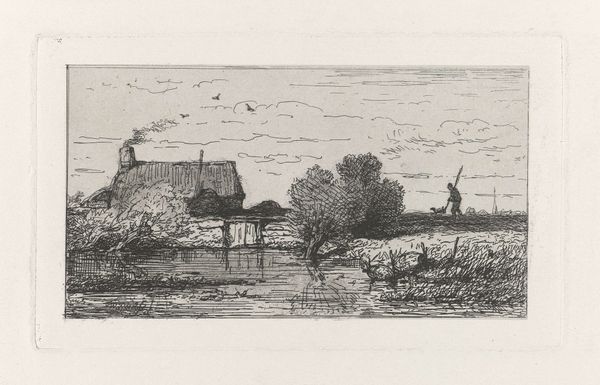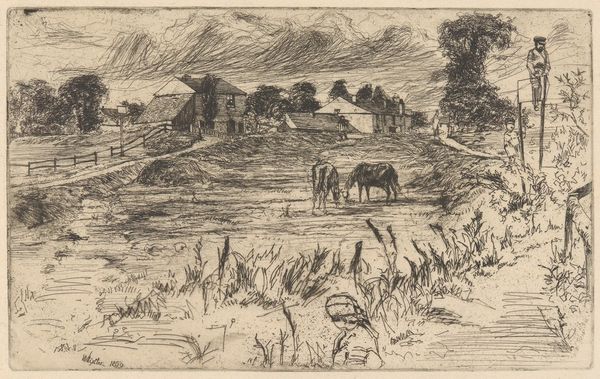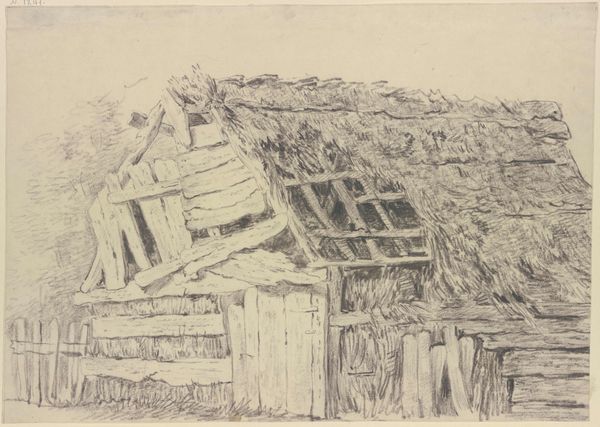
drawing, print, ink
#
drawing
# print
#
landscape
#
figuration
#
social-realism
#
ink
#
realism
Dimensions: image: 25.1 x 35.6 cm (9 7/8 x 14 in.) sheet: 29.2 x 40.6 cm (11 1/2 x 16 in.)
Copyright: National Gallery of Art: CC0 1.0
Curator: Here we have Jacob Kainen’s 1938 print titled "Early Evening." Kainen was very involved with social realism, and the imagery in this ink drawing certainly resonates with that. What's your initial take on the piece? Editor: Stark. The high contrast and angular lines evoke a feeling of unease, almost foreboding. There’s a raw quality to the marks, lending a weight to the scene. The figures are not romanticized, or prettified; there’s no artifice to its execution. Curator: Indeed, and that rawness is central to understanding its context. The late 1930s were marked by the Great Depression, which is exactly when Kainen executed this drawing. He aimed to represent the lives of ordinary people, and this artwork definitely feels unvarnished in that sense. It's not an idealized scene; instead, it presents a slice of everyday life marked by hardship. Look at the dilapidated house, the worn clothing, and the postures of the figures that don't seem very carefree. Editor: Visually, I notice how the composition relies heavily on strong diagonals created by the steps and the distant pole supporting what I think are drying cloths or sheets. Those diagonals add to the sense of instability, a visual disruption, as do the very dark solid forms in the left corner which add compositional weight. Curator: The social climate undoubtedly influenced the aesthetics. Kainen, along with many artists of his generation, believed that art should serve a social purpose. They aimed to capture the realities of their time, using art as a tool for social commentary and, hopefully, change. Editor: Yes, the artist is really embracing a high-contrast palette which flattens the dimensions, turning figures into silhouettes. In many respects, it's a stark representation, an aesthetic commitment rather than strict documentation of form, even if his overt focus was documentation of everyday life. Curator: Do you think Kainen was ultimately successful? Did his stylistic choices distract or enhance his intentions to capture everyday life? Editor: The tension is what gives this piece its enduring power, I believe. Kainen captures both a social reality and a visual complexity in one, unified stroke. It makes it feel vital to beholders. Curator: So, perhaps the aesthetic choices and his intent became inextricably intertwined. Thank you. Editor: My pleasure.
Comments
No comments
Be the first to comment and join the conversation on the ultimate creative platform.
